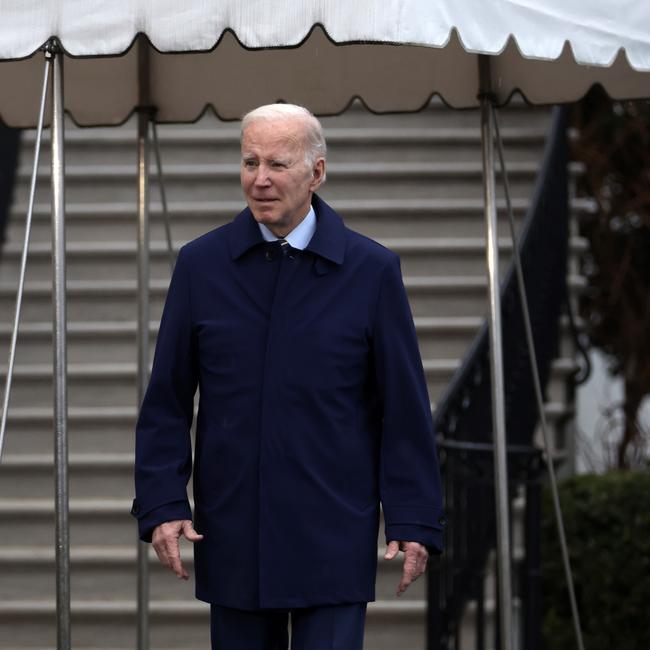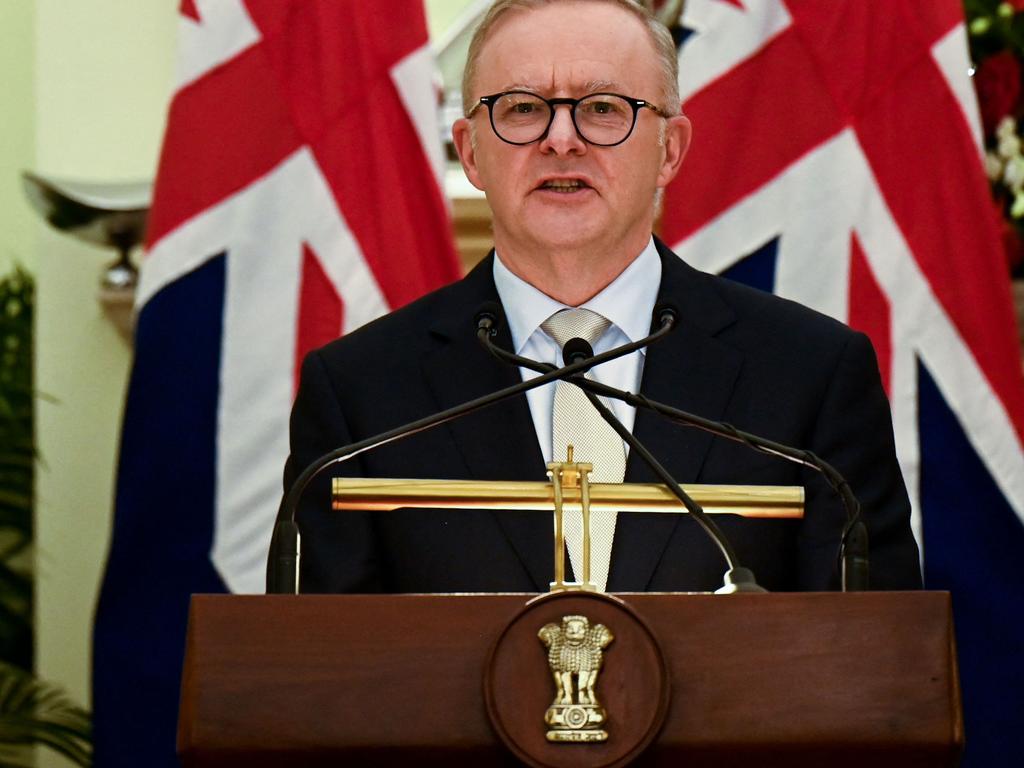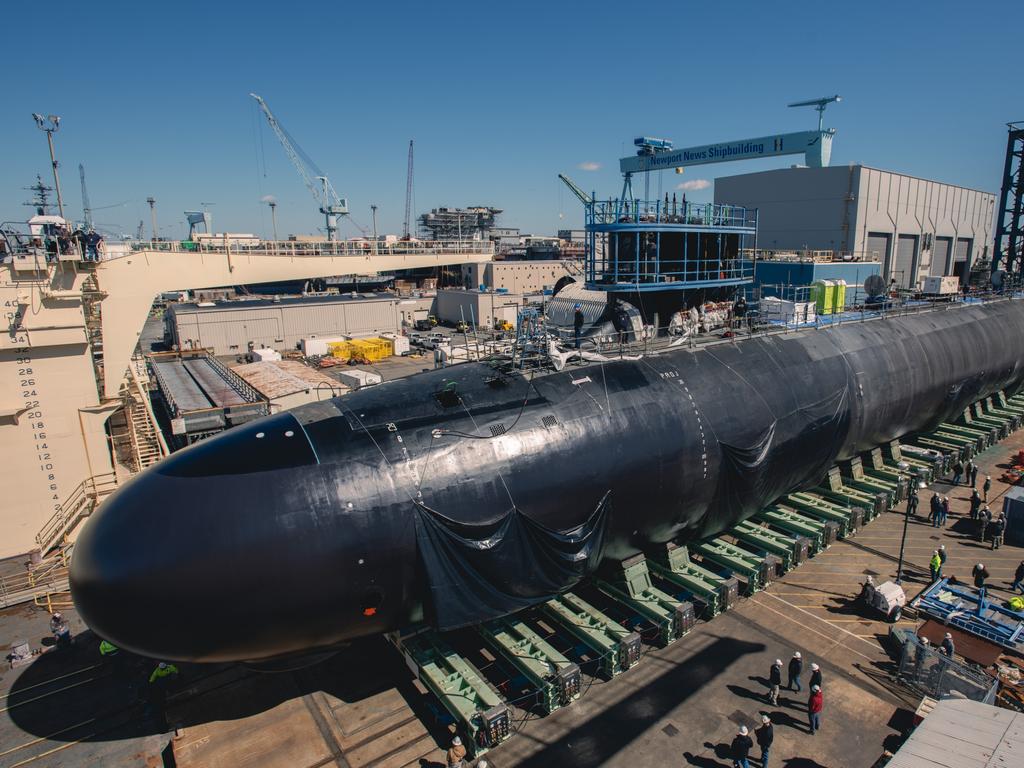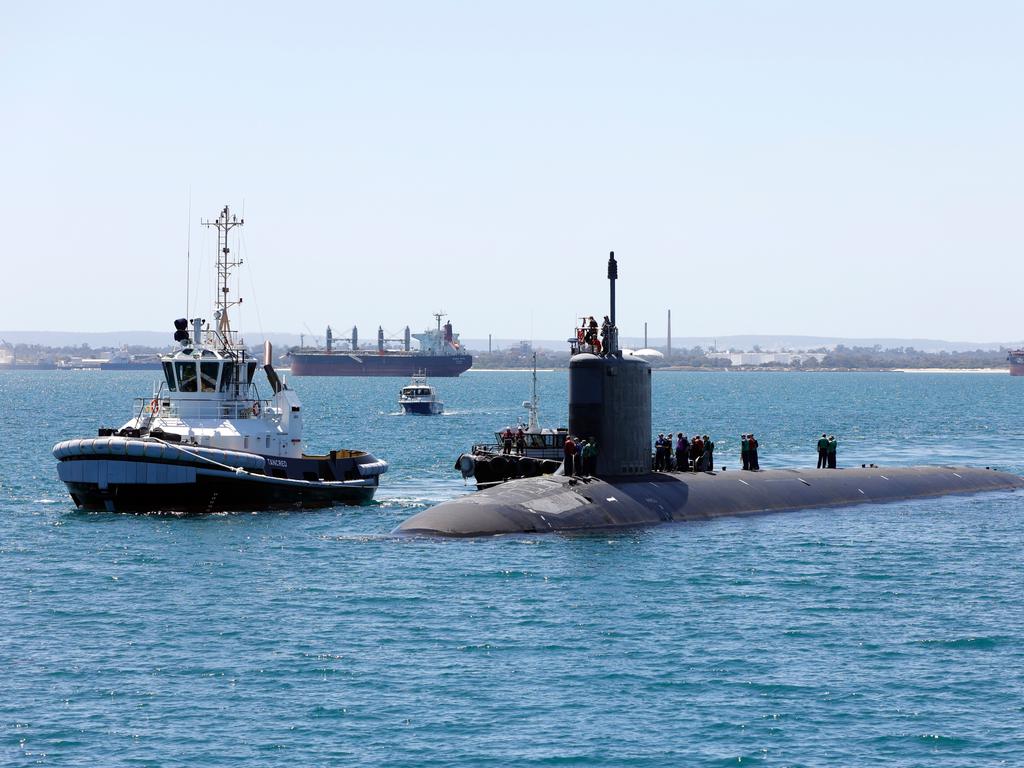Anthony Albanese warns: price of AUKUS submarine security is $200bn
The nuclear submarine plan will cost more than $200bn over 30 years, create 20,000 direct Australian jobs, and be overseen by a multi-agency body to avoid delivery issues.

Australia’s nuclear submarine plan will cost more than $200bn over 30 years, create 20,000 direct Australian jobs, and be overseen by a multi-agency body in a bid to avoid the delivery problems of past Defence mega-projects.
Anthony Albanese will warn taxpayers on Tuesday of the massive price tag they will face to acquire the “world leading” nuclear submarine capability when he unveils the AUKUS plan with Joe Biden and British Prime Minister Rishi Sunak at a US naval base.
The Australian can reveal the submarine program will be run by a stand-alone group inside Defence that will draw personnel from across the government, sidelining the department’s trouble-plagued acquisition and sustainment arms.
The submarine delivery group will be created from Vice Admiral Jonathan Mead’s nuclear submarine taskforce, which worked with the US and UK for the past 18 months to develop the government’s “optimal pathway” to acquire nuclear boats.
The Prime Minister will stand with Mr Biden and Mr Sunak at the home of the US Pacific Fleet in San Diego to announce the long-awaited nuclear submarine plan, which includes the acquisition of up to five US-built Virginia-class subs, and the construction of a new fleet of British-designed boats.
Mr Albanese has scheduled calls on Monday with key regional partners, including Indonesian counterpart Joko Widodo, to personally brief them on the submarine plan.

The deal is being framed as the most important upgrade to Australia’s military capability since World War II, but one that presents the greatest industrial challenge the nation has ever faced. It is understood Mr Albanese will “give a realistic cost estimate” of the AUKUS plan on Tuesday. Labor will contrast the approach with that of the former Coalition government which consistently understated the cost of its now-cancelled Attack-class subs.
Official estimates now reveal the French-designed boats would have cost at least $216bn to 2055 – well over the initial $50bn reported to the public.
The Australian understands the latest submarine plan will cost even more in a 30-year effort to build a nuclear navy from scratch. Initial government estimates suggest the endeavour will support up to 8500 direct jobs in the building and maintenance of the submarines including scientists, engineers, project managers, technicians, construction workers, electricians and metal fitters.
Ultimately, the government expects the endeavour will support about 20,000 direct jobs over the next 30 years across industry, the Australian Defence Force and the Australian Public Service.

The Prime Minister, who arrived in San Diego from India on Sunday afternoon (AEDT), said the submarine plan was about “jobs and manufacturing”, and declared Adelaide and Western Australia would be big beneficiaries.
“This is about building up our capacity. And when you talk about the issue of manufacturing submarines in Australia, that‘s an absolute priority for us. That will be seen as part of the announcement,” he said.
Mr Albanese flagged the need for a national conversation on the need for tougher budget measures to pay for higher Defence spending, arguing the submarine capability was about ensuring a more “peaceful, secure world”. “Australia faces real challenges. We have said very clearly and explicitly that there are major pressures on expenditure, not just in Defence but in other areas as well,” he said.
“It‘s why the government is working so hard. It’s why the (Expenditure Review Committee) has been meeting regularly. It’s why we need to be prepared to make some difficult decisions.”
Mr Albanese briefed Indian Prime Minister Narendra Modi on the submarine plan before departing the country on Saturday.
The multi-agency future submarine group will be responsible for all elements of the program, including safety, non-proliferation and regulatory measures, international engagement, education and training, industry development and project management.
It’s understood it will be led, at least initially, by Vice Admiral Mead, who will have a direct reporting line to Defence Minister Richard Marles.
Leaks of the AUKUS plan have revealed US nuclear subs will be forward-based in Australia from 2027, before the arrival of three to fine Virginia-class subs in the 2030s, and a longer-term construction effort to build a fleet of British-designed boats with US combat systems and weapons.

Democrat congressman Joe Courtney, who chairs the US House of Representatives seapower committee, confirmed on Sunday that Australia would invest in expanding US submarine production in return for on-the-job training for the nation’s future submarine workforce.
“Everybody‘s going to be sort of contributing to each other’s needs,” he told the ABC.
“Contributing to the Virginia program, it‘s just a logical way to increase proficiency for welders and electricians and all the skilled jobs that take that repetition and take that cadence to really get up to the highest level of quality.”
Mr Courtney also indicated Australia would get second-hand Virginia-class subs, but vowed the boats would be “of the highest quality”. “The shelf-life of a Virginia-class submarine is 33 years. No one is going to be, you know, foisting off clunkers on good friends and allies,” he said.
Mr Albanese was greeted in San Diego by Australian Ambassador to the US, Arthur Sinodinos, and US Ambassador to Australia, Caroline Kennedy.
Mr Albanese was due to have bilateral talks with Mr Sunak on Monday AEDT – the leaders’ second meeting – before his fifth meeting Mr Biden on Tuesday AEDT ahead of the announcement.
“Australia has long understood that partnerships and alliances are key to our security – that’s why I’m visiting the United States for this important announcement,” he said. “Australia, the United States and the United Kingdom have a shared interest in preserving peace and upholding the rules and institutions that secure our region and the world.”
The coming nuclear submarine announcement coincides with new warnings from the scientific community that Australia faces a “skills crisis” in nuclear science, with the nation over-reliant on foreign expertise and universities lacking the capacity to train sufficient numbers of new nuclear scientists.

Australian Academy of Science president Chennupati Jagadish said on Sunday that Australia was “significantly behind our peer nations in national nuclear and radiation science capability.”
“Building capability in nuclear science will be central to achieving the aims of the Australian government in developing a nuclear-powered submarine capability,” Professor Jagadish said.
“Demand for nuclear scientists to meet existing workforce needs, let alone the national capacity to benefit from new developments in nuclear physics, is running well above supply and the capacity of existing universities to train sufficient scientists.”
Australia currently has about 900 submariners to operate its fleet of six Collins-class submarines and will need to increase that number, with the navy to begin a new recruitment campaign on March 19 to try and drum up additional personnel.
Australia will also need nuclear-trained technicians to be placed on board the submarines with senior Defence sources saying that catching-up to the level of US and UK nuclear expertise will be a major challenge for the nation.
Currently, there are fewer than ten Australians studying in the US and UK nuclear submarine programs, but they are said to be performing in the top 30 per cent of their student cohort.
There are three Australian submarine officers currently studying at a US nuclear power school who will, after graduation, go to sea with the US navy.
Nearly all of Australia’s submarine captains have graduated from the US navy submarine command course and served forward of the nuclear bulkhead.
Unlike conventional diesel-electric submarines, nuclear boats don’t need to spend time near the surface at “periscope depth”.
They also posses an effectively unlimited power source, giving them greater range and endurance and providing crew members with greater comforts such as hot water.
They are able to traverse large distances far more swiftly, with a nuclear powered submarine capable of travelling to Hawaii from Western Australia in about ten days compared to nearly 30 for the current Collins-class boats.







To join the conversation, please log in. Don't have an account? Register
Join the conversation, you are commenting as Logout